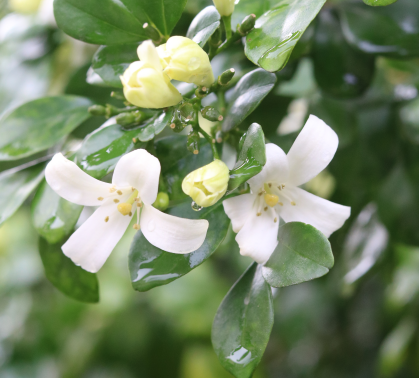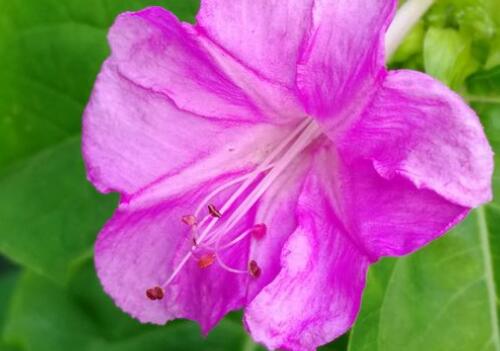Six points to explain the cultivation of jasmine!
Jasmine believes that many people have heard of it, but not many people have seen it with their own eyes. The mention of jasmine reminds me of a beautiful jasmine, which usually blossoms from May to August every year, and the color of the flower is white. Jasmine will be full of fragrance as soon as it blossoms, so many people like to plant jasmine in pots at home. Today, we will use six points to explain the breeding methods of potted jasmine!

I. methods of jasmine culture: environmental requirements
(1) temperature control: the suitable growth temperature of jasmine is between 25 and 35 degrees Celsius. It is important to control the temperature in winter and summer. When the weather exceeds 35 degrees in summer, it must be shaded. Anti-freezing measures should be taken in winter. The common thing to do is to paint it with white paint.
(2) Illumination requirements: Jasmine is a sunny plant, so it is best to put it in a sunny place when potted, so that it can grow healthily. Especially when the flowers are in bloom, putting them under the sun can make the flowers bloom more plump.
(3) soil selection: the soil of jasmine potted culture is particularly demanding because of its sensitivity. It is best to use rotten leaf soil and garden soil together to cultivate the soil, so that the base fertilizer is enough so that it can absorb some nutrients as it grows.
In short: the environmental requirements of jasmine culture methods are strong light, long sunshine and high temperature.
Second, jasmine culture method: fertilizer and water management
(1) fertilization skills: Jasmine is more fond of fertilizer, so it needs to be fertilized at the beginning of spring. Phosphate fertilizer is the best fertilizer, and less nitrogen fertilizer is used. More nitrogen fertilizer will lead to only leaves but no flowering.
(2) watering skills: because of the high temperature in summer, jasmine needs to be watered once a day, which is scheduled to be watered at 7-8am in the morning. If you see the leaves yellowing, it means that you have watered too much and need to reduce the amount of water properly. Water every 3-5 days in spring, autumn and winter, and you don't need to be watered as frequently in summer.
Third, the method of jasmine culture: reproduction
The propagation method of jasmine is mainly through hardwood cuttage, which is usually propagated in March, so that the survival rate will be higher. The cutting propagation of jasmine must be used as soon as it is cut and cannot be stored for too long, otherwise it will be difficult to feed without moisture. 20 days after the cuttage is finished, the newly grown leaves can be drenched with water, and after the seedlings grow out, they can be transplanted into the pot.
4. Cultivation method of jasmine: pruning
Pruning the branches, leaves and remnants of jasmine is an important part to ensure the normal growth and prolong the flowering period of jasmine. Subtracting the residual flowers can reduce the consumption of nutrients and prepare for the next wave of flowers. Cutting off the branches and leaves is to provide nutrients to the main root, so that it can grow luxuriantly, and it is also a chance for new branches to grow.
Fifth, the method of jasmine culture: change the pot soil.
Changing the pot soil in the process of jasmine culture is the most important. If the pot soil is not changed for three years, the jasmine will grow less and less. This is due to the lack of nutrients. Too many watering times will lead to pot soil caking, no nutrition, and can not provide nutrients to jasmine flowers. So it is best to change the pot soil once a year, and it is most appropriate to change the pot soil in March.
6. Methods of jasmine culture: pest control
Jasmine cultivation will inevitably be disturbed by diseases and insect pests, the most common pests are shell insects and red spiders, you can buy drugs to kill these two kinds of insects online to spray on the trees. The main diseases, such as root rot, white silk disease, flower branch blight, etc., can be treated with lime powder scattered next to the potted soil.
Conclusion: the above are the six main points of jasmine culture methods for you. I hope they can help you. This paper is integrated with the network.
Time: 2019-03-13 Click:
- Prev

"evergreen plants of the four seasons" Jiuli incense culture methods and matters needing attention!
Jiuli incense, also known as Qili incense, is an evergreen plant all the year round. Because of its beautiful plant shape, beautiful branches and leaves and rich fragrance of flowers, it is also very popular with everyone. Many people want to breed at home but do not know how to breed and what to pay attention to.
- Next

When does purple jasmine usually bloom? Put these planting methods away!
Speaking of purple jasmine, most people may think of purple jasmine, but in fact, although it belongs to the purple jasmine family, it is not jasmine. The following is to introduce its information and when to blossom! In addition, friends who like purple jasmine can also take a look at how to grow it. The basic situation of purple jasmine
Related
- Fuxing push coffee new agricultural production and marketing class: lack of small-scale processing plants
- Jujube rice field leisure farm deep ploughing Yilan for five years to create a space for organic food and play
- Nongyu Farm-A trial of organic papaya for brave women with advanced technology
- Four points for attention in the prevention and control of diseases and insect pests of edible fungi
- How to add nutrient solution to Edible Fungi
- Is there any good way to control edible fungus mites?
- Open Inoculation Technology of Edible Fungi
- Is there any clever way to use fertilizer for edible fungus in winter?
- What agents are used to kill the pathogens of edible fungi in the mushroom shed?
- Rapid drying of Edible Fungi

